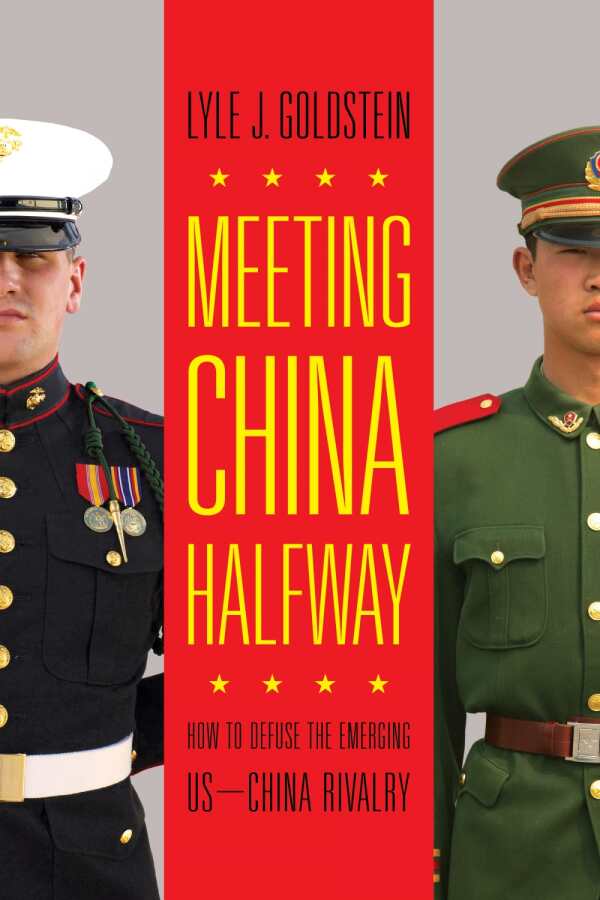Meeting China Halfway
How to Defuse the Emerging US–China Rivalry
A scholarly and optimistic analysis of US-China relations, as well as a call to action on the importance of improving ties between the two superpowers.
In Meeting China Halfway, Lyle J. Goldstein provides an in-depth look at how relations between the governments of the United States and China could improve, complete with detailed advice centered around what he calls “cooperation spirals.” Structured into a series of chapters, each with a list of progressive steps the two governments could take on given issues, the book is both optimistic about the future of US-China relations and urgent in its emphasis on the necessity of starting such a program immediately.
Goldstein begins his book with an alarming scenario, that of a military conflict between the United States and China. This possibility, he states, has only increased significantly in the past decade. His work aims to provide ideas on how to avoid this, focusing on cooperation spirals that are the opposite of the escalation spirals countries often find themselves in. Unlike other works on a similar subject, Goldstein aims to “take Chinese voices seriously—a shortcoming of all too much scholarship on China and US-China relations.”
A scholarly work, Meeting China Halfway delves into both the history of US-China relations and a set of longstanding issues between the two nations, utilizing both an academic writing style and extensive footnotes to make its points. The book initially describes historical topics, from the presence of American missionaries to the conquest of the Philippines by the US in 1898, up to the Korean War (called the War to Resist America in China) and modern conflicts. It includes specific strategies and proposals on issues ranging from environmental issues to the nations’ presences in Korea, the Middle East, Taiwan, and more, with suggested moves and countermoves that make up Goldstein’s “cooperation spiral” strategy.
Overall, Meeting China Halfway offers an interesting, though largely hypothetical, look at the steps both nations might take to build trust and work toward a cooperative, mutually beneficial relationship. Academic in tone and scope, this timely book would appeal to scholars and laymen interested in its thoughtful proposals, along with an overview of the conflicts that both nations face.
Reviewed by
Stephanie Bucklin
Disclosure: This article is not an endorsement, but a review. The publisher of this book provided free copies of the book to have their book reviewed by a professional reviewer. No fee was paid by the publisher for this review. Foreword Reviews only recommends books that we love. Foreword Magazine, Inc. is disclosing this in accordance with the Federal Trade Commission’s 16 CFR, Part 255.

